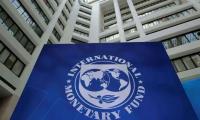KARACHI: The rupee fell to a fresh low in interbank and open market on Friday, hurt by stronger demand for the dollar from importers amid weakness in the country’s foreign currency reserves, dealers said.
The rupee ended 0.35 percent or 49 paisas weaker touching 140.78 per dollar interbank market, compared to the close of 140.29 per dollar on Thursday.
It traded in a 140.50-140.80 band intraday. The domestic currency went down 0.70 percent (Re1) at 142.30 against the greenback in the kerb dealings. “Rupee has fallen due to slow market adjustment factor and upcoming payment pressure in next month. Further, the market is anticipating the rupee will weaken to 145 by the end of this fiscal year,” a dealer said.
Market participants have been anticipating a completely free-floating currency since Finance Minister Asad Umar’s interview to the Financial Times, where he said that the country might secure a bailout package from the Internationl Monetary Fund (IMF) of between $6 and $12 billion by the middle of May.
The Internationl Monetary Fund mission chief for Pakistan visited Islamabad and Karachi during March 26 and 27, for introductory meetings with the authorities.
“The expected IMF bailout would devalue the currency further,” one market participant said. “The Internationl Monetary Fund has called the rupee is too rigid and overvalued.” Zafar Paracha, the secretary general of Exchange Companies Association of Pakistan linked the current currency weakness to dollar shortage in the open market.
“There was a shortage of dollars in the market following exporters’ reluctance to sell their holdings,” he said. He further pointed out that the dollar was not even available at Rs142.50 in the market. “There was an increased dollar demand in the market that pushed the rupee down. Dollar outflows related to imports and foreign debt repayments were also adding to the greenback demand in the interbank market.”
With an improvement in the external balance as well as an increase in bilateral official inflows, SBP’s foreign exchange reserves gradually recovered to $10.7 billion as of March 25. But reserves are still below the standard adequacy levels (equal to three months of imports cover).
The country has received $2.1 billion earlier during the week from China (total of $9 billion since the start of the newly elected government in July 2018), according to report released by Topline Securities.
In this picture, the PCJCCI logo can be seen on September 1, 2022. — Facebook/Pakistan China Joint Chamber of...
The logos of the World Bank and IMF. — AFP FileNEW YORK: The United States is the MVP of GDP. That was the...
A security guard sits in front of a wall with signs and slogans at the operation building at the Pakistan Steel Mills ...
A worker cleans the entrance to the headquarters of Bank Indonesia, the nation's central bank, in Jakarta, Indonesia....
The MCB's logo is seen on a wall outside the bank's head office. — MCB websiteKARACHI: MCB Bank Limited on...
Stack of Rs5,000 and Rs1,000 notes. — AFP/FileKARACHI: The rupee lost ground against the dollar in both currency...







